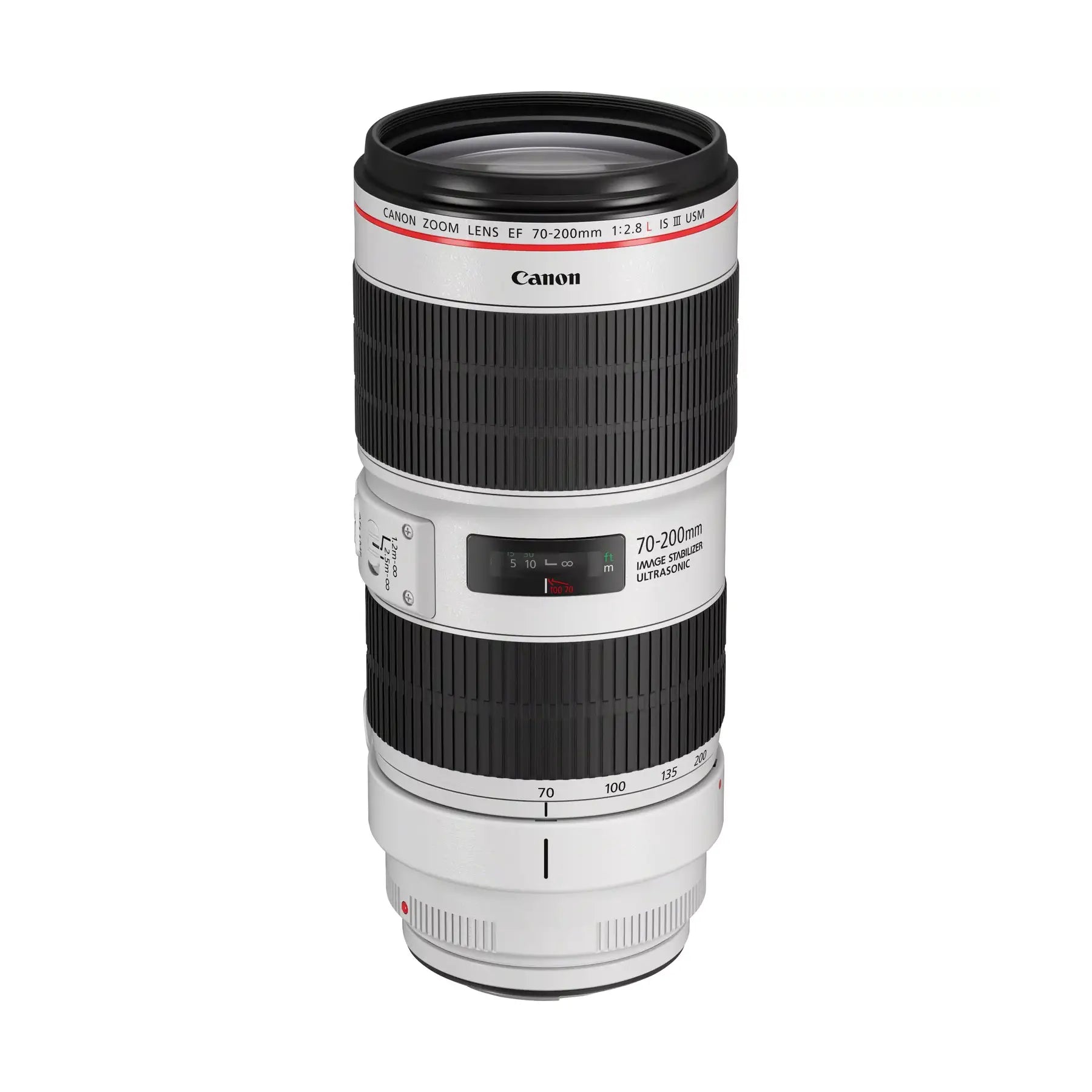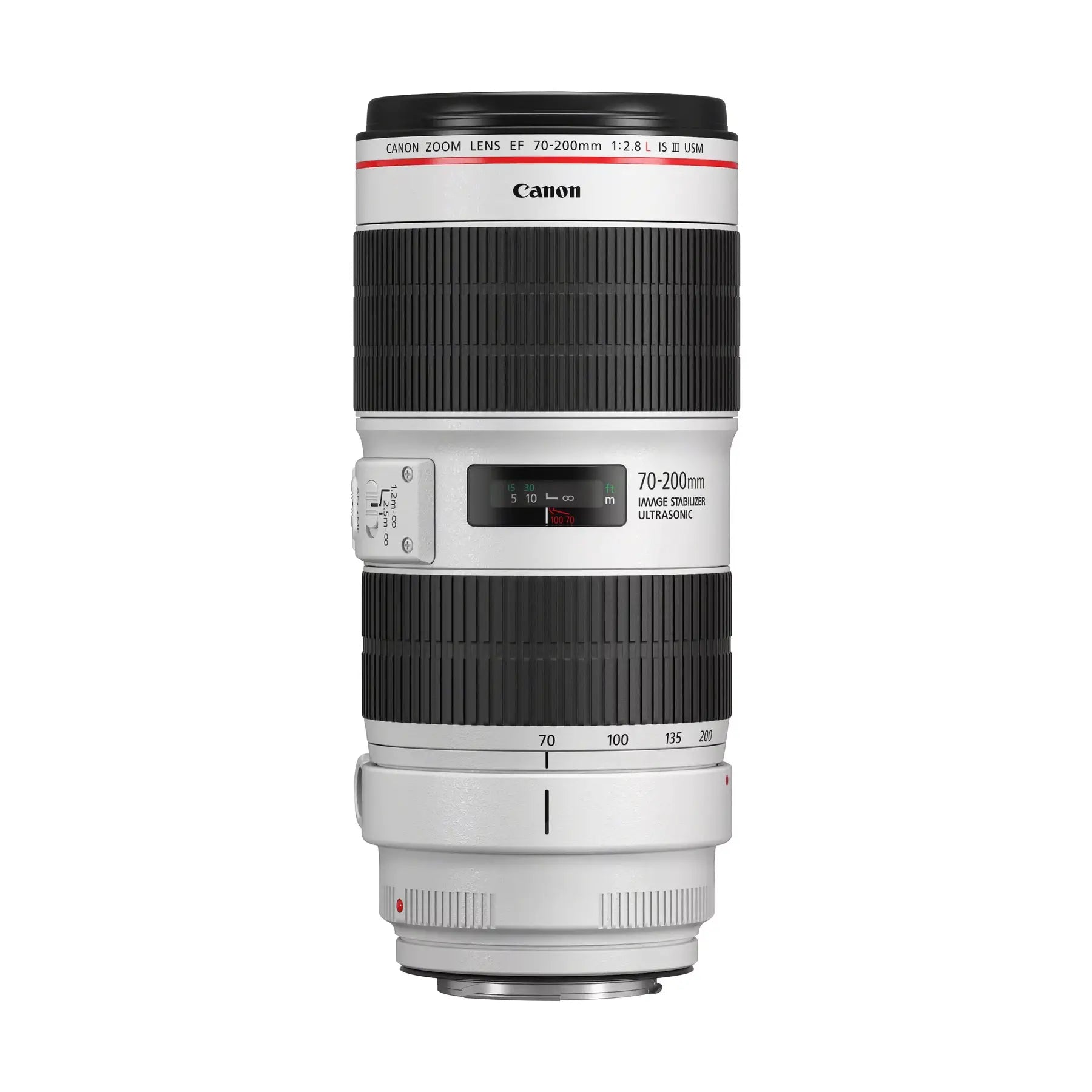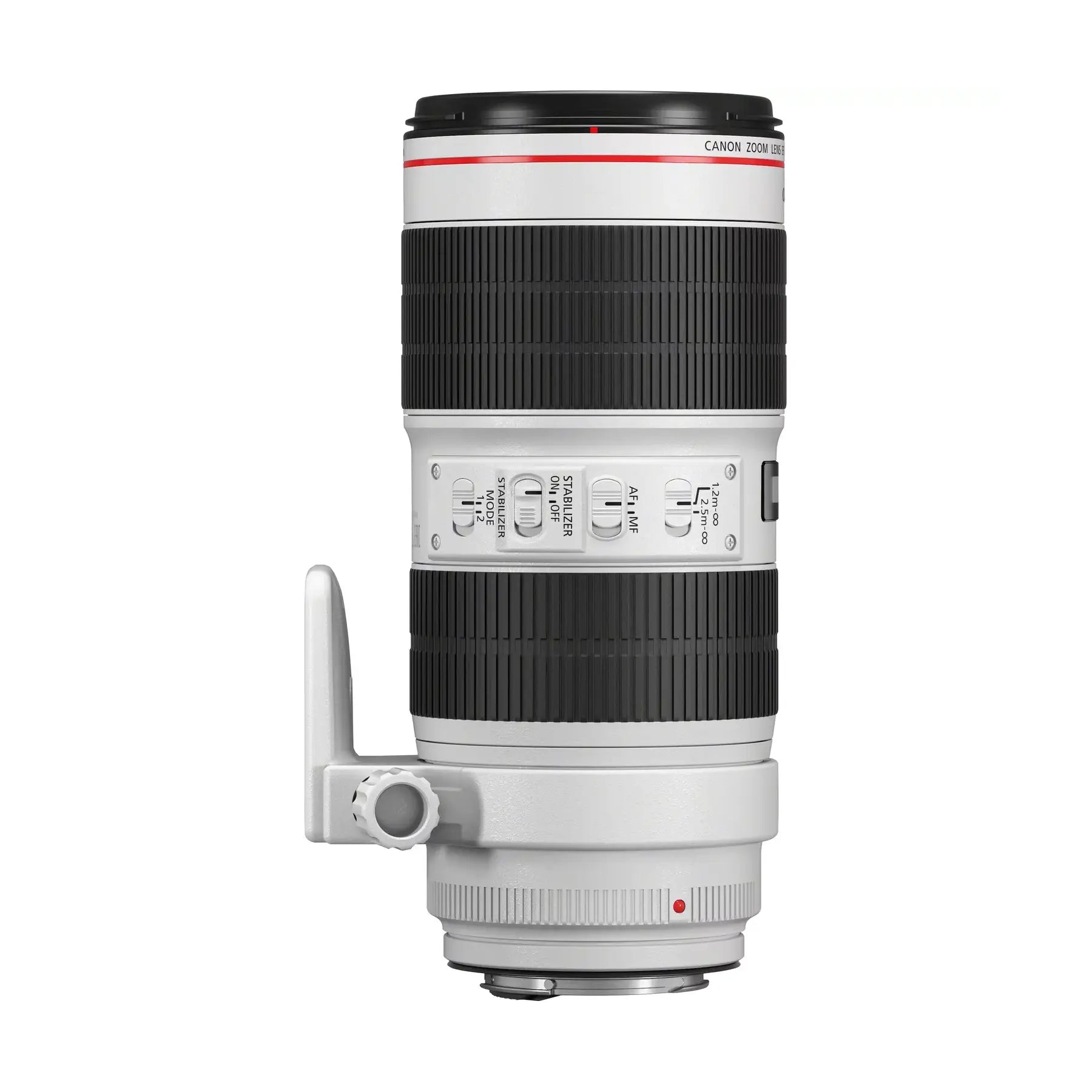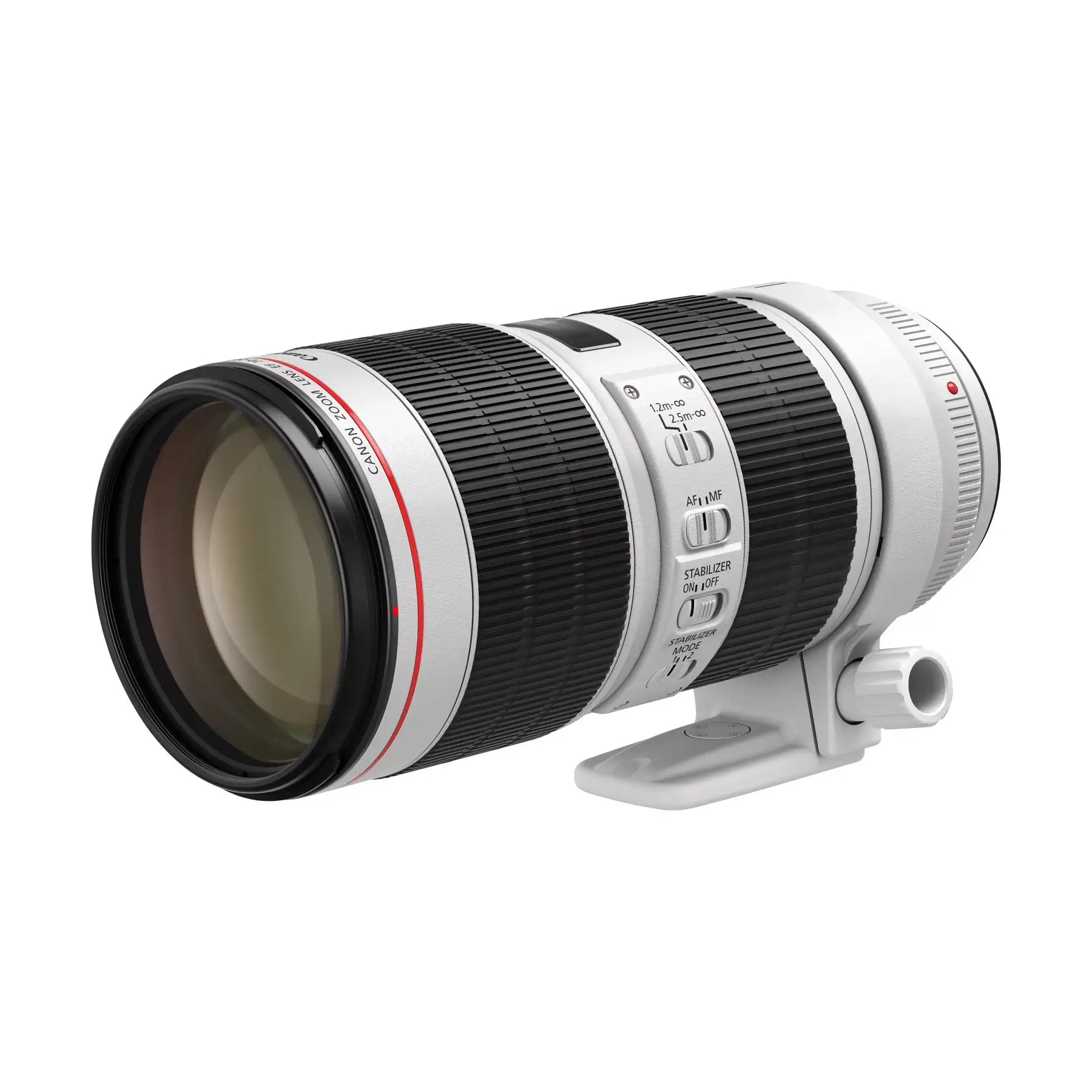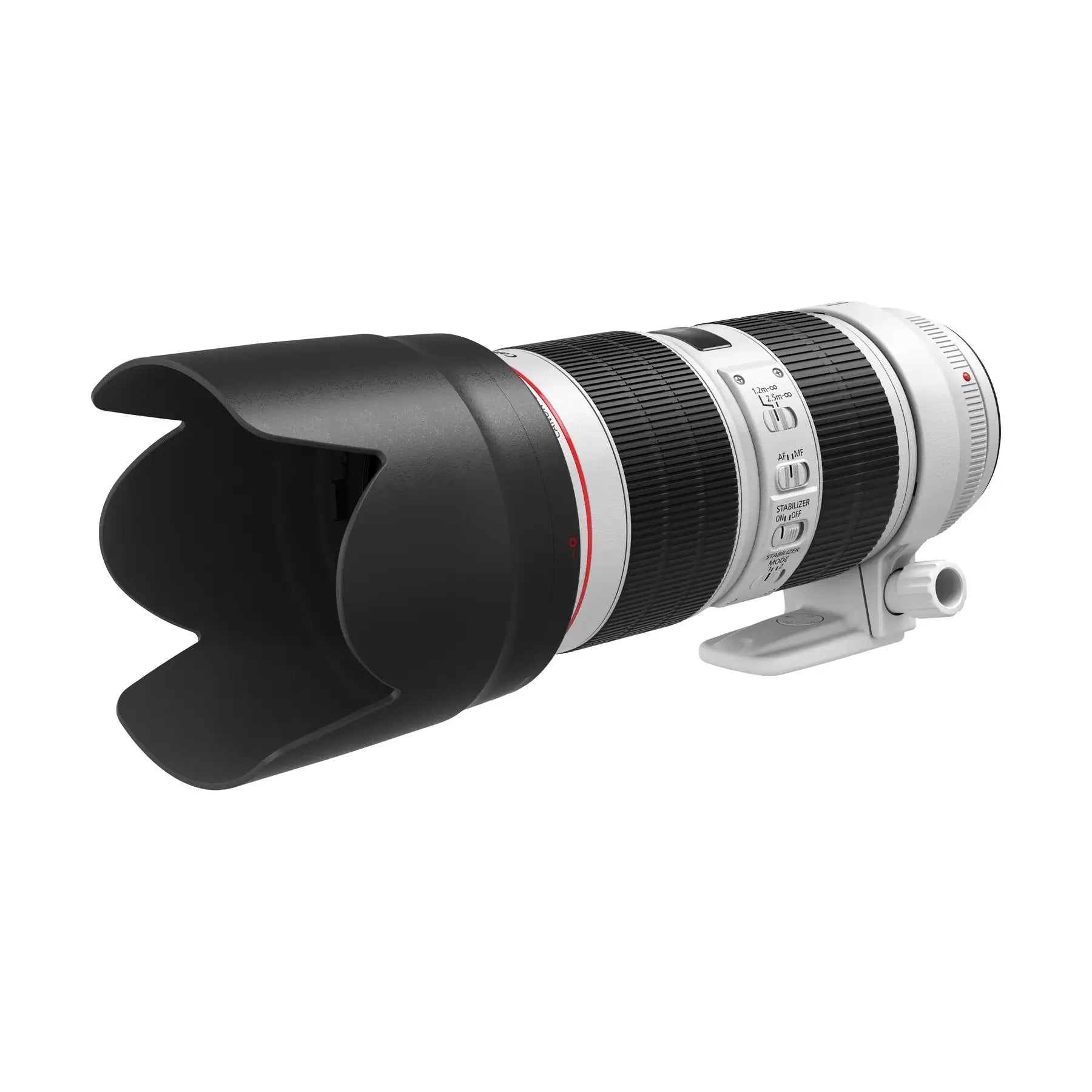Product Description
Canon EF 70-200mm f/2.8L IS III USM Lens
The ultimate telephoto zoom for professionals.
Renowned as an industry-standard lens, the Canon EF 70-200mm f/2.8L IS III USM is a versatile and fast-aperture telephoto zoom lens, ideal for professional photographers across various genres. Whether you're capturing sports, wildlife, portraits, or landscapes, this lens delivers exceptional image quality and reliability in all shooting conditions.
Key Features
Exceptional Optics and Performance
- Wide f/2.8 Aperture: Offers beautiful background separation with silky-smooth bokeh, even in low light.
- Fluorite and UD Elements: Delivers high contrast, superb resolution, and reduced chromatic aberration for sharp, detailed images.
-
Advanced Lens Coatings:
- ASC (Air Sphere Coating): Reduces flare and ghosting, ensuring clearer and sharper photos in challenging lighting.
- Super Spectra Coating: Minimises reflections for enhanced colour accuracy.
Outstanding Image Stabilisation
- 3.5-Stop Image Stabiliser: Compensates for camera shake, enabling sharp handheld shots in low-light situations or at longer focal lengths.
Robust Build and Weather Resistance
- L-Series Quality: Weather-sealed construction ensures durability and reliability, even in challenging environments.
- Fluorine Coating: Found on both front and rear elements, repels water, oil, and dirt for easy cleaning.
Fast and Reliable Autofocus
- Ring-Type USM Motor: Enables fast, accurate, and quiet autofocus, perfect for tracking moving subjects.
- Manual Focus Override: Allows instant manual adjustments without switching modes.
Specifications
- Focal Length: 70-200mm
- Maximum Aperture: f/2.8
- Minimum Aperture: f/32
- Lens Construction: 23 elements in 19 groups
- Aperture Blades: 8 (circular diaphragm for smooth bokeh)
- Minimum Focusing Distance: 1.2m
- Maximum Magnification: 0.21x
- Filter Diameter: 77mm
- Weight: Approx. 1480g
- Dimensions: Approx. 88.8 x 199mm
Ideal For
- Sports and Action Photography: Capture fast-moving subjects with precision.
- Portraits: Achieve stunning subject-background separation.
- Wildlife: Reach distant subjects with sharp detail.
- Low-Light Shooting: The constant f/2.8 aperture ensures excellent performance in dim environments.
What's in the Box
- Canon EF 70-200mm f/2.8L IS III USM Lens
- Lens Hood (ET-87)
- Lens Cap (E-77 II)
- Rear Lens Cap
- Lens Case (LZ1326)
Elevate your photography with the Canon EF 70-200mm f/2.8L IS III USM—combining speed, precision, and durability for unparalleled performance.
Try The Kit - Canon Test Drive

Canon Test Drive – Try Before You Buy with Free Next Day Delivery
Test selected Canon gear with a 48-hour free trial or hire for up to 7 days at a low cost. Book anytime via the 24/7 live system.
How it works:
-
Book your kit – Choose dates and reserve online.
-
Pay a refundable deposit – Fully refunded upon safe return.
-
Fast delivery – Get your gear quickly and securely.
-
Easy returns – Use pre-paid packaging for simple drop-off or collection.
Visit https://testdrive.trythekit.com to book yours now.
Payment & Security
Your payment information is processed securely. We do not store credit card details nor have access to your credit card information.

